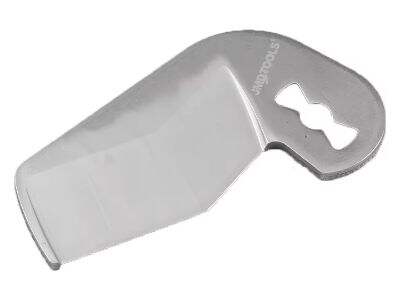Känn din sågjobb! olika typer av sågblad för trä
Det finns otäligheter av kategorier av sågblad som kan användas för att skära trä. Några vanliga typer inkluderar:
– Rätskärande blad: Dessa blad har ett rätkantigt blad som gör dem perfekta för att göra vertikala skär i trä.
Skruvblad: Dessa jigsaw cutter blade har en kort, kurvig skärkant och är idealiska för att göra detaljerade skär och kurvor i trä.
Tunnklingblad: Dessa blad har en tunnare skärbredd och kan göra mer exakta och fina skär i trä.
Gräsklippningsblad: Denna typ av blad har tjockare och större tänder och är bäst att använda för att skära tjock och hård trä.
Hur man väljer ett sågblad beroende på dina skärbehov
Att välja en jigsaw-verktygsblad för Trä Det typ av trä du planerar att skära, tillsammans med önskad skärkvalitet och hastighet, kommer att avgöra vilken sågblad som är bäst för ditt nästa träarbetesprojekt. Här är några tips att överväga när du väljer rätt stångsågblad för din skäruppgift:
Tänk på träets tjocklek: När du måste skära igenom tjockt trä, välj ett blad med större tänder och tjockare skärspalt.
— Överväg typ av skärning: För raka snitt, använd ett rakblad, och för böjda eller detaljerade snitt, välj ett blad för mönsterskärning.
— Tips: Observera tänder per tum: Antalet tänder på ett stångsågsblad anger hur många tänder per tum bladet har. Ju fler tänder, desto jämnare blir snittet, medan färre tänder skär snabbare men kan ge en något grovare kant.
Hur man utvärderar stångsågsblad för träets kvalitet och hållbarhet
Analys av stångsågsblads kvalitet och slitage är nyckeln till framgång och effektivitet i en skärprocess. Hur väljer man bästa blade för en jigsaw för Trä?
Bladets tjocklek – ju tjockare desto bättre eftersom det är mycket svårare att böja eller krossa.
Tändernas hårdhet: Förstärkta tänder är mer slitstarka och håller längre utan att bli trubbiga.
Bladmaterial: Mer premiummaterial som karbid är slitstarkare och tål hårdare skärningsförhållanden.
Bladbeläggning: Några sågblad har ett extra beläggning som minimerar friktion samt värmeuppbyggnad, vilket förlänger bladets livslängd.
Fördelar och nackdelar med olika sågbladsmaterial
Material för sågblad Det finns olika material som används för att tillverka sågblad, där varje material har sina egna fördelar och nackdelar. Så här står de mest populära bladmaterialen sig i jämförelse:
Högsmältstål-blad: Fördelarna med detta material är låg kostnad och böjningsförmåga, men nackdelen är sämre tandhärvning och kortare livslängd.
Bimetallblad: Fördelarna är lång livslängd och motståndskraft mot värme, men nackdelen är högre pris och sämre flexibilitet.
— Hartmetallblad: Fördelar är lång livslängd och bra skärprestanda; nackdelar är högre pris och i vissa fall begränsad tillgänglighet på olika träslag.

 EN
EN
 AR
AR
 BG
BG
 HR
HR
 CS
CS
 DA
DA
 NL
NL
 FI
FI
 FR
FR
 DE
DE
 EL
EL
 IT
IT
 JA
JA
 NO
NO
 PL
PL
 PT
PT
 RO
RO
 RU
RU
 ES
ES
 SV
SV
 LV
LV
 LT
LT
 SR
SR
 SK
SK
 SL
SL
 UK
UK
 ET
ET
 HU
HU
 TR
TR
 FA
FA
 GA
GA
 CY
CY
 BE
BE
 IS
IS
 HY
HY
 AZ
AZ
 KA
KA
 LA
LA
 MY
MY
 XH
XH

